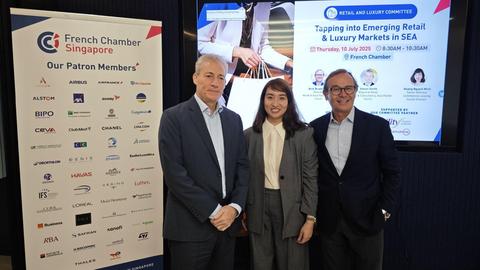Bilans d’évènement
Past Event| District Cooling: An Efficient Energy Solution for Decarbonisation

The French Chamber of Commerce held an interactive in-person dialogue on the 23rd September at ENGIE Factory, covering district cooling systems and plans in Singapore and the region. The panellists shared about why the project is different and revolutionary; whether district cooling system can be built and operated on existing buildings; what is the future of district cooling and how we can go further and more.
In South-East Asia, District Cooling solutions will play a more important role to help the region meet its cooling needs. In Singapore, a broader application of such a sustainable cooling solution will certainly contribute towards meeting the country’s energy goals under the Singapore Green Plan 2030 and climate targets of reaching net zero around 2050.
Our sincere thank you to the panellists:
- Mr. Sebastien Walker, Head of Business Development – Mixed Use and Real Estate at ENGIE South East Asia
- Mr. David Tan, Assistant Chief Executive Officer (Development Group) at JTC Corporation
- Mr. Bernard Nee, Vice President (Industry & Community Group) at Singapore Institute of Technology
- Moderated by Mr. Brice Degeyter, Founder & General Manager at BIZSU
Highlights from the Panellists and Key Learnings
From ENGIE:
- Cooling our cities is becoming a necessity – what was once a luxury is now a matter of public health. Doing it efficiently with our best solutions is an environmental obligation. District Cooling System (DCS) is one of those solutions.
- Connecting existing buildings to DCS is necessary if we want to have an impact. The number of existing buildings is simply too great to be ignored.
- It is possible to design new buildings today that consume no energy. Historically, we have been able to build naturally ventilated / cooled buildings. We need to relearn tropical architecture, bio-mimesis, and incorporating old-ways with new learnings / technology to realise this vision.
- For existing buildings, the challenge is different. We need to focus on aiming for net zero.
- Net zero can be achieved through three approaches: 1) Passive solutions - nature-based solutions, white painting, shading, etc. 2) Active solutions - such as reducing and optimizing energy consumption (DCS, smart energy management systems, etc.) and generating balance from renewables (solar PV, batteries, offsite, etc.). 3) Combined impact - bundling solutions and trying to optimize their impact.
- There is also a social challenge - we must collectively change the way we live, change the way we perceive our comfort.
From Singapore Institute of Technology (SIT):
- It is going to be a journey - in terms of improvements in building designs, cooling systems design and their operations. But slowly and surely it will get us to meeting our low-carbon ambitions.
- We can reduce the cooling load (demands) as much as possible through better design, and complement that with more efficient cooling through solutions like district cooling.
- Beyond infrastructure it is about operations. It will require new capabilities in IOT, digital twinning and management. Training is also needed to design, building and operate cooling systems in an optimized manner. SIT is working with ENGIE to train manpower in this unique, cross-domain space.
- There will be new technologies and solutions that will be needed, for us to chip away at the carbon footprint. SIT is also partnering ENGIE to see how we can catalyse that.


